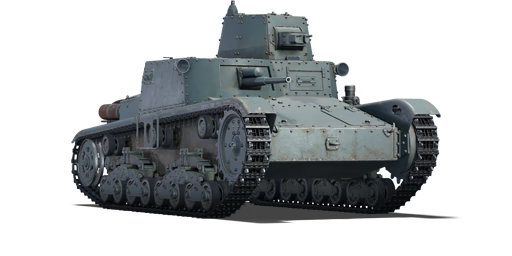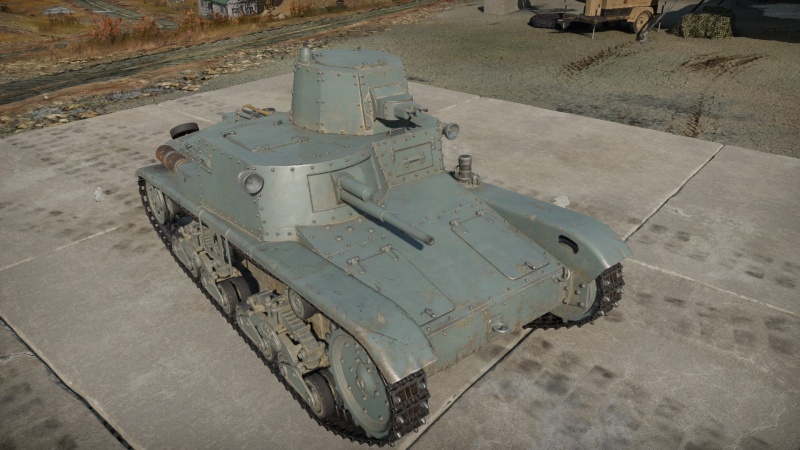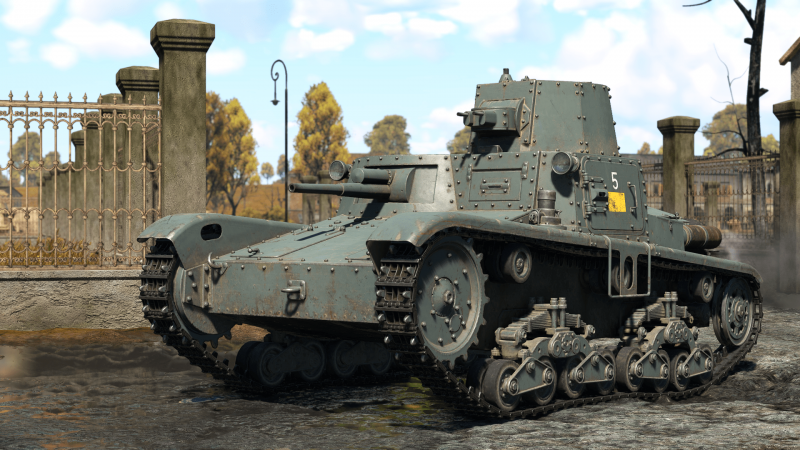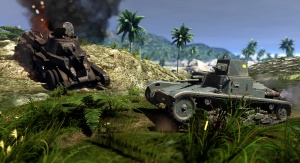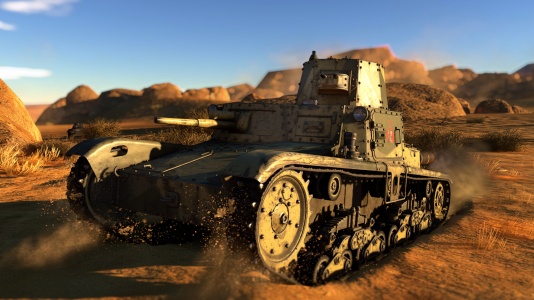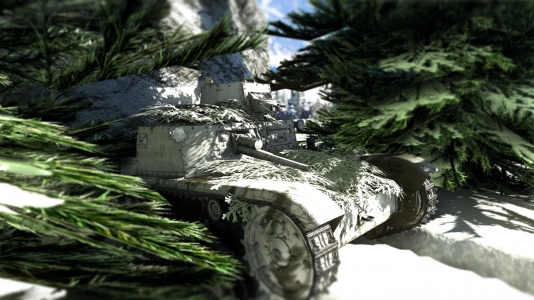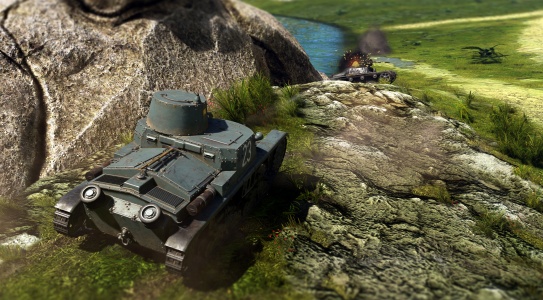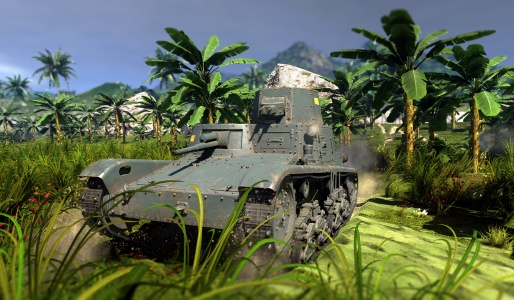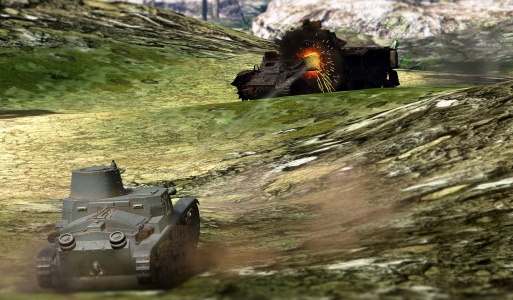Difference between revisions of "M11/39"
Colok76286 (talk | contribs) (Edits) |
(→Description) |
||
| (One intermediate revision by the same user not shown) | |||
| Line 6: | Line 6: | ||
== Description == | == Description == | ||
<!-- ''In the description, the first part should be about the history of the creation and combat usage of the vehicle, as well as its key features. In the second part, tell the reader about the ground vehicle in the game. Insert a screenshot of the vehicle, so that if the novice player does not remember the vehicle by name, he will immediately understand what kind of vehicle the article is talking about.'' --> | <!-- ''In the description, the first part should be about the history of the creation and combat usage of the vehicle, as well as its key features. In the second part, tell the reader about the ground vehicle in the game. Insert a screenshot of the vehicle, so that if the novice player does not remember the vehicle by name, he will immediately understand what kind of vehicle the article is talking about.'' --> | ||
| − | The ''' | + | In the 1930s, the Italian army lacked modern tanks, possessing only armoured cars armed with machine guns, intended solely for infantry support. Consequently, desiring to equip its army with contemporary equipment, Italy began developing a new tank in 1932, marking its first independent foray into tank design. The first prototype was presented in 1938, and serial production commenced in 1939 under the designation '''M11/39'''. A total of 100 tanks were built. Upon entering service with the Italian army, these tanks saw action in East and North Africa until 1942, when they ceased to be used due to a lack of spare parts and design flaws: weak armour, poor layout, and an ineffective gun. Nonetheless, the problems of the M11/39 were taken into account during the development of subsequent Italian medium tanks - the [[M13/40 (I)|M13/40]] and [[M14/41]]. |
| + | |||
| + | The '''M11/39''' was introduced in [[Update 1.85 "Supersonic"]]. Demonstrating good survivability, decent mobility, and a sufficiently powerful gun, it is well-suited for both ambushes and active offensives. However, weak side armour, limited aiming angles, and mediocre gun ballistics, limit its effectiveness in open terrain. | ||
== General info == | == General info == | ||
| Line 73: | Line 75: | ||
==== Ammunition ==== | ==== Ammunition ==== | ||
| − | { | + | {{:Vickers-Terni 37/40 mod.18 (37 mm)/Ammunition|Granata Perforante da 37 mm}} |
| − | |||
| − | |||
| − | |||
| − | |||
| − | |||
| − | |||
| − | |||
| − | |||
| − | |||
| − | |||
| − | |||
| − | |||
| − | |||
| − | |||
| − | |||
| − | |||
| − | |||
| − | |||
| − | |||
| − | |||
| − | |||
| − | |||
| − | |||
| − | |||
| − | |||
| − | | Granata Perforante da 37 mm | ||
| − | |||
| − | |||
==== [[Ammo racks]] ==== | ==== [[Ammo racks]] ==== | ||
Latest revision as of 20:03, 22 August 2024
Contents
Description
In the 1930s, the Italian army lacked modern tanks, possessing only armoured cars armed with machine guns, intended solely for infantry support. Consequently, desiring to equip its army with contemporary equipment, Italy began developing a new tank in 1932, marking its first independent foray into tank design. The first prototype was presented in 1938, and serial production commenced in 1939 under the designation M11/39. A total of 100 tanks were built. Upon entering service with the Italian army, these tanks saw action in East and North Africa until 1942, when they ceased to be used due to a lack of spare parts and design flaws: weak armour, poor layout, and an ineffective gun. Nonetheless, the problems of the M11/39 were taken into account during the development of subsequent Italian medium tanks - the M13/40 and M14/41.
The M11/39 was introduced in Update 1.85 "Supersonic". Demonstrating good survivability, decent mobility, and a sufficiently powerful gun, it is well-suited for both ambushes and active offensives. However, weak side armour, limited aiming angles, and mediocre gun ballistics, limit its effectiveness in open terrain.
General info
Survivability and armour
Armour type:
- Rolled homogeneous armour (hull, turret)
- Cast homogeneous armour (gun mantlet, MG mantlet, MG mount)
| Armour | Front (Slope angle) | Sides | Rear | Roof |
|---|---|---|---|---|
| Hull | 30 mm (19°) Upper plate - Gun mount 30 mm (11°) Upper plate - Driver side 30 mm (19°) Gun shield 30 mm (cylindrical) Gun mantlet 14 mm (77°) Upper glacis 30 mm Lower plate 10 mm (77°) Lower glacis |
14 mm (7°) Top 15 mm Bottom |
30 mm Crew compartment 14 mm Upper plates 14 mm (54°) Upper glacis 14 mm (20°) Lower glacis |
14 mm (13°) Front glacis 8 mm Crew compartment 6 mm (3-17°) Engine cover 5 mm (8°) Engine vents |
| Turret | 30 mm (11°) Turret front 30 mm MG mantlet 15 mm (cylindrical) MG mount |
14 mm (7-10°) | 14 mm (9°) | 7 mm |
Notes:
- Suspension wheels and torsion bars are 15 mm thick while tracks are 20 mm thick.
- Support plates for wheels and suspensions are 7 mm thick.
- Belly armour is 10 mm thick.
The M11/39 has fairly unimpressive protection overall at 30 mm frontally. At common combat ranges it will be vulnerable to the vast majority of typical rounds, however it is frontally immune from heavy machine gun fire. The crew is made up of 3 total members: the driver, the gunner and the commander, the latter of which is positioned in the MG turret. An incoming shot into this turret will rarely knock out the tank with a single shot, but a shot placed into the drivers port will commonly see the vehicle knocked out. However it is fairly likely enemies will attempt to fire into the MG turret, which will likely only knock out the commander leaving all other assets of the tank completely functional, allowing you to drive off or return fire.
Mobility
| Game Mode | Max Speed (km/h) | Weight (tons) | Engine power (horsepower) | Power-to-weight ratio (hp/ton) | |||
|---|---|---|---|---|---|---|---|
| Forward | Reverse | Stock | Upgraded | Stock | Upgraded | ||
| Arcade | 38 | 6 | 11 | 201 | 248 | 18.27 | 22.55 |
| Realistic | 34 | 5 | 115 | 130 | 10.45 | 11.82 | |
The mobility of the M11/39 is quite average: it is fast and responsive enough to get around the map and change direction easily, but not fast enough to really take advantage of its mobility. It won't outpace many enemy vehicles to advantageous positions into the map, and overall doesn't offer any advantage to the vehicle other than being adequately mobile. Its reactive mobility is fairly effective however, it can easily turn in place to face a different direction when upgraded which is necessary due to the hull mounted cannon. It can cruise off-road at 37 km/h in AB and 33 km/h in RB, so it isn't slow by any means, but not notably very fast either. The reverse is only -4/-5 km/h as well, making it hard to back out of an unwanted engagement.
Modifications and economy
Armaments
Main armament
| 37 mm Vickers-Terni 37/40 mod.18 | Turret rotation speed (°/s) | Reloading rate (seconds) | |||||||||||
|---|---|---|---|---|---|---|---|---|---|---|---|---|---|
| Mode | Capacity | Vertical | Horizontal | Stabilizer | Stock | Upgraded | Full | Expert | Aced | Stock | Full | Expert | Aced |
| Arcade | 84 | -8°/+15° | ±15° | N/A | 13.3 | 18.4 | 22.4 | 24.8 | 26.4 | 4.03 | 3.57 | 3.29 | 3.10 |
| Realistic | 8.3 | 9.8 | 11.9 | 13.2 | 14.0 | ||||||||
The M11/39 is equipped with a hull mounted 37 mm cannon that fires an APHE round. Overall, the performance of the cannon and this round is largely unimpressive, at common combat ranges it can punch through between 35-25 mm of flat armour, which means that it can potentially meet some vehicles that the round can't frontally penetrate without a very well aimed shot. It will struggle against the American Stuarts and the majority of French vehicles, meaning that this vehicles combat ability isn't hugely consistent. Additionally, it lacks the penetration performance to engage at ranges, as past 800 m or so, the penetration power falls off to only 20 mm of flat penetration which means it will struggle to penetrate the vast majority of enemy vehicles, on top of this the cannon itself is fairly inaccurate. The round does contain 23 g of explosive filler however, which is enough to knock out enemy vehicles with 3 crew members or less with a single shot fairly regularly, which is something to consider.
Ammunition
| Penetration statistics | |||||||
|---|---|---|---|---|---|---|---|
| Ammunition | Type of warhead |
Penetration @ 0° Angle of Attack (mm) | |||||
| 10 m | 100 m | 500 m | 1,000 m | 1,500 m | 2,000 m | ||
| Granata Perforante da 37 mm | APHE | 39 | 36 | 26 | 17 | 12 | 8 |
| Shell details | ||||||||||||
|---|---|---|---|---|---|---|---|---|---|---|---|---|
| Ammunition | Type of warhead |
Velocity (m/s) |
Projectile mass (kg) |
Fuse delay (m) |
Fuse sensitivity (mm) |
Explosive mass (TNT equivalent) (g) |
Ricochet | |||||
| 0% | 50% | 100% | ||||||||||
| Granata Perforante da 37 mm | APHE | 640 | 0.7 | 1.2 | 9 | 23 | 47° | 60° | 65° | |||
Ammo racks
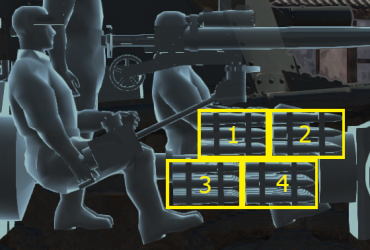
| Full ammo |
1st rack empty |
2nd rack empty |
3rd rack empty |
4th rack empty |
Visual discrepancy |
|---|---|---|---|---|---|
| 84 | 64 (+20) | 43 (+41) | 22 (+62) | 1 (+83) | Yes |
Notes:
- Shells are modeled by sets of 3 shells and will disappear from the rack once all shells in the set have been loaded/fired.
- Pack 43 (+41) shells or fewer to minimize on board ammunition while staying capable for lasting engagements.
Machine guns
| 8 mm Breda Mod. 38 | ||||
|---|---|---|---|---|
| Mount | Capacity (Belt) | Fire rate | Vertical | Horizontal |
| Turret | 720 (24) | 600 | -10°/+20° | ±180° |
| Turret | 720 (24) | 600 | -10°/+20° | ±180° |
The M11/39 is also equipped with twin 8 mm Breda Mod. 38 machine guns in the Commander's turret with 24 rounds per gun. They have basically no viability against enemy armour and can only be used to knock out exposed crew members. However, they can potentially be used as an anti-air weapon as the twin machine guns will be enough to cripple enemy aircraft. In practice applying them in this way isn't very viable though, as they can't elevate high enough to be able to attack aircraft unless the aircraft is flying very low, or the tank is positioned on an angle giving it an artificially higher elevation. The machine guns can be used to attack aircraft, however it isn't regularly effective enough to consider this a key strategy.
Usage in battles
Because of its various shortcomings, the M11/39 doesn't have a playstyle that consistently works well every time, but certain ways of play are easily more consistent than others. One effective way to play is in ambush, lying in wait to engage enemies at close range, at distances the cannon is just too inaccurate and lacks the penetration required to be constantly effective, so playing it at close range negates those issues. It's also important to avoid situations where you could possibly meet an enemy on the move, as adjusting your angle to face the enemy tied with how unstable the cannon is when coming to a stop, means that enemy tanks will likely be able to get a shot off on you before you can accurately fire at them.
Ideally, you're going to want to engage at close range from a sedentary position, watching corners or covering cap points is where you'll likely see the most hostile tanks, so if you can find a good position in these locations you will likely pick up a few kills. Due to the small size of the M11, it might tank enemies a few seconds longer than normal to identify you as a threat, especially if you're positioned out of the way, making this vehicle even more adequately suited to the ambush role.
It's also important to note which tanks you'll struggle engaging, the M11 lacks the penetration to engage most French tanks and the late American Stuarts and HMCs, so it's a good idea to look at the armour layout of these vehicles to identify weak spots, if an enemy comes into sight that you can't easily penetrate, refrain from engaging it unless it presents a side shot, there's no use firing if you can't reliably cut through the armour. The M11/39 is a more defensive tank when compared to its contemporaries, and if you can identify a good camping position on any given map, the M11 will likely perform well enough.
Pros and cons
Pros:
- Machine guns have anti-air potential
- Shell has enough filler to knock out many tanks with a single penetrating shot
- Relatively fast reload
- Low profile
Cons:
- Poor penetration
- Fairly inaccurate main gun
- Poor performance at range
- Low survivability
History
This pre-war design was intended to be the standard Italian medium tank, equipping medium tank battalions in the armoured divisions. Influenced by the British Vickers 6-ton, which can be seen in its suspension design; the positioning of the medium-velocity 37 mm main armament in a limited-traverse hull mounting rather than a turret was short-sighted and quickly lost favour. The tank had no radio. Only 100 were built before Italy moved on to the M13/40. Twenty-four served, in 4-tank platoons, with the Medium Special Tank Company (Compagnia Speciale Carri M) in the East African Armored Task Force in Italian East Africa until the Italians there were defeated in June 1941. Another 70 were deployed with the 1st and 2nd Medium Tank Battalions, which deployed to Libya in summer, 1940, and were all either destroyed or captured by British forces by early February 1941.
Media
- Skins
- Images
- Videos
See also
- Vehicles equipped with a similar chassis
- Other vehicles of similar configuration and role
- SAu 40 - French tank destroyer with similar configuration of hull cannon and turret machine gun
External links
- [Wikipedia] M11/39 tank
- [Tanks Encyclopedia] Carro Armato M.11/39
- [Military Factory] Carro Armato M11/39
| FIAT-Ansaldo | |
|---|---|
| Autoblindo | AB 41 · AB 43 |
| Light Tanks | L6/40 · L6/40 (31 Rgt.) |
| Medium Tanks | Celere Sahariano |
| M11/39 | M11/39 |
| M13/40 | M13/40 (I) · M13/40 (II) · M13/40 (III) |
| M14/41 | M14/41 · M14/41 (47/40) |
| M15/42 | M15/42 |
| P40 | P40 · P40 "G.C. Leoncello" |
| Tank Destroyers | |
| L3/33 | L3/33 CC |
| Semovente L40 | 47/32 L40 |
| Semovente M41 | 75/18 M41 · 75/32 M41 · 90/53 M41M |
| Semovente M42 | 75/34 M42 |
| Semovente M43 | 105/25 M43 · M43 "G.C.Leoncello" · 75/34 M43 · 75/46 M43 |
| SPAAs | M42 Contraereo |
| Italy light tanks | |
|---|---|
| Italy | |
| L6/40 | L6/40 · L6/40 (31 Rgt.) |
| M11/39 | M11/39 |
| Autoblindo | AB 41 · AB 43 |
| Fiat 6614/6616 | FIAT 6614 · AUBL/74 · AUBL/74 HVG |
| R3 Capraia | R3 T106 FA |
| Centauro | Centauro I 105 · Centauro I 105 R · Centauro I 120 · Centauro RGO · VRCC |
| Freccia | VBC (PT2) · Freccia |
| Dardo | Dardo · VCC-80/60 · VCC-80/30 |
| Other | C13 T90 |
| USA | ▄M3A3 · ▄M24 · ▄M18 |
| Hungary | |
| WWII | Csaba · Toldi IIA |
| Post | ◔BTR-80A · KF41 |


